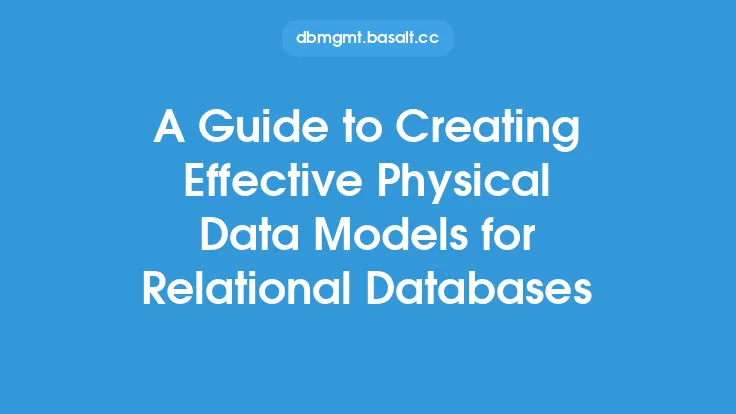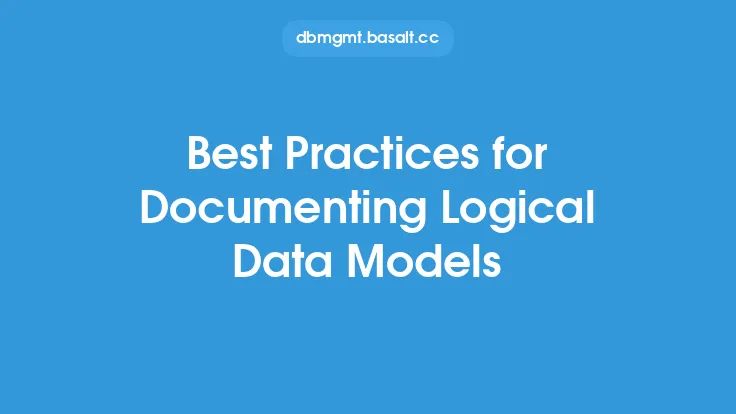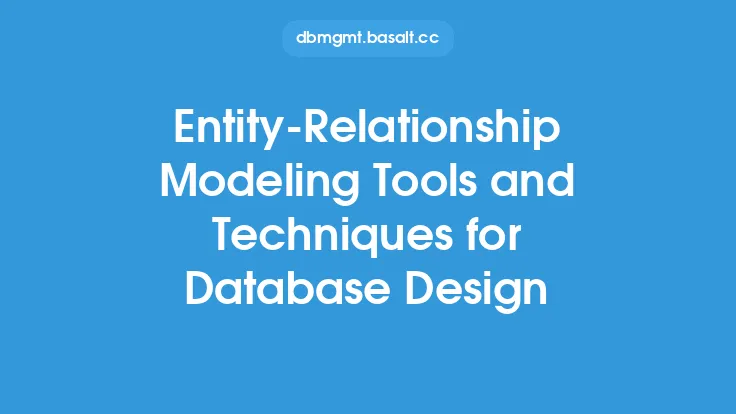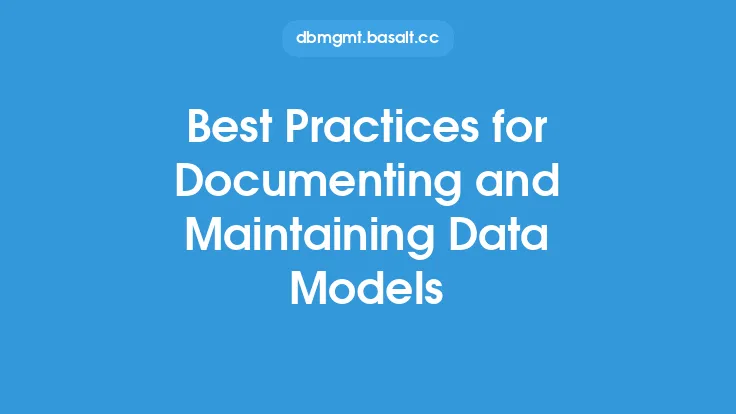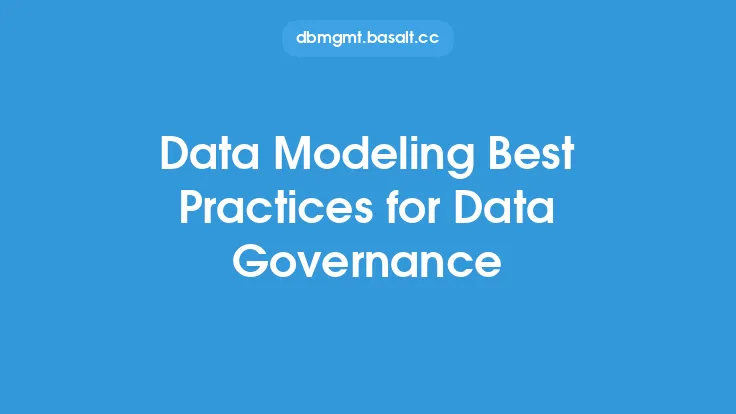Creating an effective entity-relationship model is crucial for designing a robust and scalable database. A well-designed entity-relationship model helps to ensure data consistency, reduces data redundancy, and improves data integrity. In this article, we will discuss the best practices for creating effective entity-relationship models, focusing on the key principles and techniques that can help you design a high-quality model.
Introduction to Entity-Relationship Modeling Principles
Entity-relationship modeling is based on a set of principles that help to identify and organize data into entities, attributes, and relationships. The first principle is to identify the entities, which are the objects or concepts that have an independent existence and can be described with attributes. The second principle is to identify the attributes, which are the characteristics or properties of the entities. The third principle is to identify the relationships between the entities, which can be one-to-one, one-to-many, or many-to-many. Understanding these principles is essential for creating an effective entity-relationship model.
Identifying Entities and Attributes
Identifying entities and attributes is a critical step in creating an entity-relationship model. Entities should be chosen based on their relevance to the problem domain and their ability to be described with attributes. Attributes should be chosen based on their ability to describe the entities and provide meaningful information. It is essential to avoid choosing entities or attributes that are not relevant to the problem domain or that do not provide meaningful information. For example, in a university database, "Student" and "Course" are entities, while "Student ID" and "Course Name" are attributes.
Defining Relationships Between Entities
Defining relationships between entities is another critical step in creating an entity-relationship model. Relationships can be one-to-one, one-to-many, or many-to-many, and they should be chosen based on the nature of the relationship between the entities. For example, a student can enroll in many courses, but a course can have many students enrolled, so the relationship between "Student" and "Course" is many-to-many. On the other hand, a student has only one student ID, so the relationship between "Student" and "Student ID" is one-to-one.
Using Cardinality and Ordinality to Refine Relationships
Cardinality and ordinality are essential concepts in entity-relationship modeling that help to refine relationships between entities. Cardinality refers to the number of instances of one entity that can be related to instances of another entity. Ordinality refers to the order or sequence of the instances of one entity that can be related to instances of another entity. Using cardinality and ordinality, you can refine relationships between entities and ensure that the relationships are accurate and meaningful. For example, in a university database, the relationship between "Student" and "Course" can be refined to specify that a student can enroll in at most 5 courses, and the courses are ordered by the semester in which they are taken.
Avoiding Data Redundancy and Improving Data Integrity
Data redundancy and data integrity are critical issues in database design that can be addressed using entity-relationship modeling. Data redundancy occurs when the same data is stored in multiple places, which can lead to inconsistencies and errors. Data integrity refers to the accuracy and consistency of the data. By using entity-relationship modeling, you can avoid data redundancy by storing each piece of data in one place and improving data integrity by ensuring that the data is consistent and accurate. For example, in a university database, storing the student's name and address in the "Student" entity avoids data redundancy and improves data integrity.
Normalizing the Entity-Relationship Model
Normalizing the entity-relationship model is an essential step in creating a robust and scalable database. Normalization involves organizing the data into tables that are free from data redundancy and dependency. There are several normalization rules, including first normal form (1NF), second normal form (2NF), and third normal form (3NF), each of which provides a higher level of normalization. By normalizing the entity-relationship model, you can ensure that the database is robust, scalable, and easy to maintain. For example, in a university database, normalizing the "Student" entity into separate tables for "Student", "Course", and "Enrollment" ensures that the data is free from redundancy and dependency.
Using Entity-Relationship Modeling Tools and Techniques
There are several entity-relationship modeling tools and techniques that can help you create an effective entity-relationship model. These tools and techniques include entity-relationship diagrams, data flow diagrams, and object-role modeling. Entity-relationship diagrams provide a visual representation of the entities, attributes, and relationships, while data flow diagrams provide a visual representation of the data flow between the entities. Object-role modeling provides a way to model the entities and relationships using objects and roles. By using these tools and techniques, you can create an effective entity-relationship model that meets the requirements of the problem domain.
Best Practices for Creating Effective Entity-Relationship Models
There are several best practices that can help you create an effective entity-relationship model. These best practices include:
- Identify the entities and attributes carefully
- Define the relationships between the entities accurately
- Use cardinality and ordinality to refine the relationships
- Avoid data redundancy and improve data integrity
- Normalize the entity-relationship model
- Use entity-relationship modeling tools and techniques
By following these best practices, you can create an effective entity-relationship model that meets the requirements of the problem domain and provides a robust and scalable database.
Conclusion
Creating an effective entity-relationship model is crucial for designing a robust and scalable database. By following the best practices outlined in this article, you can create an entity-relationship model that meets the requirements of the problem domain and provides a robust and scalable database. Remember to identify the entities and attributes carefully, define the relationships between the entities accurately, use cardinality and ordinality to refine the relationships, avoid data redundancy and improve data integrity, normalize the entity-relationship model, and use entity-relationship modeling tools and techniques. With these best practices, you can create an effective entity-relationship model that provides a solid foundation for your database design.
